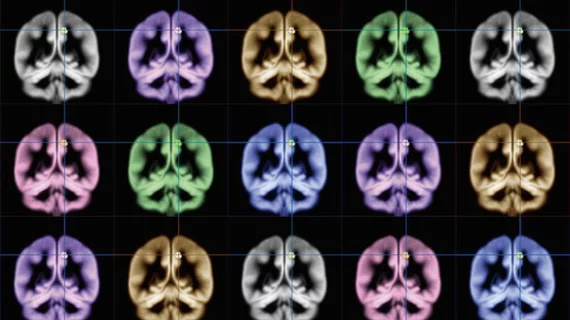New research finds gadolinium retention in the cerebral cortex, debunking conventional wisdom
Patients who receive gadolinium-based contrast agents (GBCAs) for imaging exams may retain some of the material in the most highly developed part of their brain.
A team of East Coast scientists found gadolinium, specifically gadopentetate dimeglumine, was left behind in multiple areas of the brain’s cerebral cortex that are central for cognition, regulating behavior and consciousness, among other tasks. The findings, published Nov. 26 in Radiology, challenge the conventional belief that GBCAs are retained primarily in brain areas involved in complex activities.
“Mounting evidence indicates that intravenous gadolinium-based contrast agent exposure may be associated with gadolinium retention in subcortical regions of the brain,” Olga Minaeva, with Boston University Medical Center, and colleagues wrote. They went on to note they found “multiple mechanisms for gadolinium transport, distribution, and retention in the brain that may challenge current concepts, research priorities, and clinical considerations regarding GBCA-related gadolinium exposure…”
The researchers tested four human brains and a rat brain, finding contrast in the cerebral cortex of those exposed to GBCAs, but not in the two GBCA-naïve brains. Contrast retention varied by cortical region, subregion and layer, distributing similarly to how iron moves in the blood.
Gadolinium was long thought to bypass the blood-brain barrier before settling in certain brain regions, but these findings suggest contrast may traffic alternate routes, potentially via the brain’s neurons and glial cells.
Commenting on the study in a related editorial, Emanuel Kanal, MD, with the University of Pittsburgh Medical Center, said the findings, above all else, remind the field how little is still known about GBCAs.
“THE single most important issue remains unresolved at this time, and that is that the clinical significance and relevance—if any—to retained (general and) intracranial gadolinium, in whatever form(s) it may be found, is still not known,” he said.
Kanal argued that the question can only be answered by focusing governmental, industrial and academic resources on the topic, and only then can radiology close the “frustrating chapter in the somewhat tarnished life story of gadolinium-based contrast agents.”

